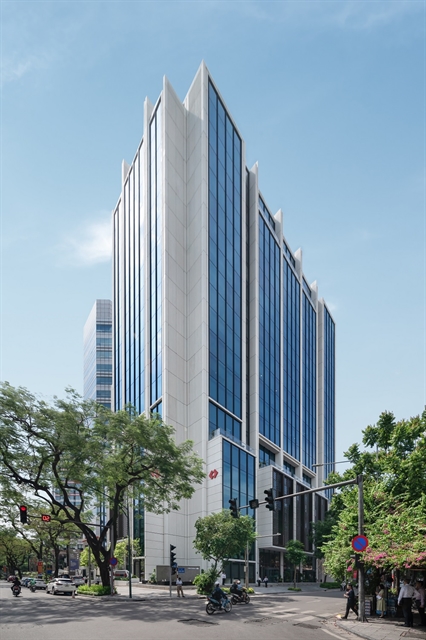 Society
Society

Transforming the workplace for women requires the elimination of structural barriers, discriminatory laws and social norms to create equal economic opportunities, said United Nations Resident Co-ordinator Kamal Malhotra. He spoke Friday at a dialogue organised by the Ministry of Labour, Invalids and Social Affairs and UNDP about women’s economic empowerment in the changing world of work.
 |
| Transforming the workplace for women requires the elimination of structural barriers, discriminatory laws and social norms to create equal economic opportunities. — Photo ILO |
HÀ NỘI — Transforming the workplace for women requires the elimination of structural barriers, discriminatory laws and social norms to create equal economic opportunities, said United Nations Resident Co-ordinator Kamal Malhotra. He spoke Friday at a dialogue organised by the Ministry of Labour, Invalids and Social Affairs and UN Women about women’s economic empowerment in the changing world of work.
The event, timed to mark International Women’s Day on March 8, brought together nearly 100 delegates from ministries and Government agencies, social-political organisations, civil social organisations and UN agencies in Việt Nam.
Malhotra said the world of work was changing in significant ways, increasingly engaging women in paid labour both in the services and manufacturing sectors.
“However, globalisation reproduced gender inequalities by concentrating women workers at the bottom of the global value chain, in the lowest jobs, in piece-rate, subcontracted work and insecure forms of self-employment, with little or no access to social protection,” he said.
Việt Nam is a dynamic, emerging economy with 73 per cent of women participating in the economy – the third highest rate in the 10 ASEAN economies, where the average is around 65.5 per cent, he said.
“Economic growth of the country is not necessarily translating into greater gender equality for all,” Malhotra added.
For example, only 29 per cent of working women in Việt Nam are engaged in wage employment compared to almost 40 per cent of working men. Wage employment is often associated with better working conditions and socio-economic status.
More women than men are in vulnerable employment due to a large share of women working as family workers with no independent access to income.
“Women in Việt Nam face discrimination in law, such as the unequal retirement age. Rigid gender norms are restricting women’s opportunities. Women bear the disproportionate burden of domestic work and care work and they are expected to balance this responsibility with productive work,” he said.
Minister of Labour, Invalids and Social Affairs Đào Ngọc Dung said that Việt Nam has about 25.82 million working women, accounting for 48.48 per cent of working people.
Việt Nam implemented programmes and projects to assist women in accessing labour market information, preferential loans, job training or getting jobs.
But, he said, the quality of jobs for women remains low and unstable; the rate of women working in the informal economy remains relatively high. Of the working women, over 41 per do simple manual jobs and 43.6 per cent are farm workers.
Women in wage employment are paid a monthly salary of VNĐ 4.58 million while men’s salary is about VNĐ5.19 million.
Unemployed women accounted for 44.6 per cent of about 1.12 million unemployed people in Việt Nam.
Moreover, some FDI companies in Việt Nam are seen to prefer employ young female workers aged of 18 and 20. Women aged 30-35 rarely continued to be employed, thus they return to their hometowns, mostly rural areas, with little capital and no job, Dung said.
“It’s necessary to add mechanisms/ provisions into the revised Labour Code to make employers use labour sustainably and provide employees with decent work and access to social welfare,” he added.
Đào Quang Vinh, director of the Institute of Labour Science and Social Affairs under the labour ministry, said that Việt Nam’s legal framework and policies reveal gender inequality.
Discrimination against women is found in regulations on retirement age, and jobs in which employers are not allowed to employ women. There remain gender stereotypes in career orientation and job options. Preferential policies for hiring more female workers are available but not implemented effectively.
He said that Việt Nam’s growing global integration and the fourth industrial revolution could result in gender gap reduction but include the downsizing of particularly labour-intensive industries, such as textile and garment, footwear and electronics, in which women workers account for 70-85 per cent.
“The existence of gender stereotypes in career choices and employment is the biggest barrier preventing women from developing and achieving higher status in family and society,” he said.
Vinh said in order to promote gender equality in the changing world of work, Việt Nam needs to revise laws and remove regulations unfavourable to women in human resources development. He urged measures to help groups of disadvantaged women labourers access and benefit from human resources development policies.
Deputy Minister of MOLISA, Nguyễn Trọng Đàm, said it is necessary to revise and complete laws and policies relating to gender equality and women’s advancement. He also urged efforts to eliminate gender prejudices and stereotypes, noting that women themselves should become more proactive in building their own capability and actively participate in the building, enforcement and supervision of policies. — VNS









.jpg)